Safari Road Trip in Africa 🇿🇦🇳🇦

While living in South Africa during the COVID-19 pandemic, we took a safari road trip to Kgalagadi Transfrontier Park in South Africa and Etosha Pan in Namibia. Join me on the journey to explore the fascinating wildlife.
Table of Contents
Few words about South Africa
South Africa is easily accessible with major airlines operating international flights to these cities. A crucial travel tip is to always collect luggage upon arrival in Johannesburg or Cape Town, even for connecting flights within the country.
Mobile data: For mobile data, I recommend using the Airalo app, which allows you to download a data e-SIM card for countries worldwide. It’s easy and hassle-free. I activate the data e-SIM in my phone settings upon arrival and I have instant access to the internet.
The official currency is the South African Rand, and ATMs are widely available. While cards are accepted, carrying some cash is beneficial. Petrol stations are found in all cities, with attendants offering services without the need for you to leave your car.
In South Africa, they drive on the left-hand side of the road, similar to the UK. The main roads between cities are generally in good condition, although it’s advisable to watch for potholes. Once you get off the main road, expect to drive on dirt or gravel roads.
Load shedding, or power outages, is common in South Africa due to power generation challenges. The ESP app provides real-time information on scheduled outages, but many establishments operate independently using generators or solar panels.
Crime is a reality, and blending in, avoiding visible displays of wealth, and taking precautions such as not engaging with strangers are advised. When driving, keeping belongings secure and refraining from stopping in rural areas contribute to a safer and more enjoyable experience in the country.
Few words about Namibia
The population of Namibia is approximately 2.8 million. The capital city is Windhoek, where major airlines operate flights. English is the official language, though most people speak Oshiwambo as their mother tongue. Afrikaans and German are also well understood.
The official currency is the Namibian Dollar. Similar to South Africa, ATMs are widely available, and cards are accepted. Petrol stations, available in all cities, provide services with attendants without requiring you to leave your car. As in South Africa, they drive on the left- hand side of the road.
Namibia is generally considered a safe country, but awareness, especially in large cities, is advisable.
Our trip
We started our safari road trip in Africa from our base in Port Alfred. The initial drive we undertook was to Upington, covering a distance of 926km, which occupied the entirety of our day.
The good news is that anyone interested in following our journey can fly directly to Upington Airport. Flights are available with airlines such as South African FlyAirlink.
Upington
Upington is a city founded in 1873 and situated in the Northern Cape province of South Africa, along the banks of the Orange River.
Nortern Cape is South Africa’s largest province, covering nearly a third of the country’s territory. Despite its size, it has the smallest population among all the provinces.
We chose the accommodation just outside Upington at Oranje Rus Resort.
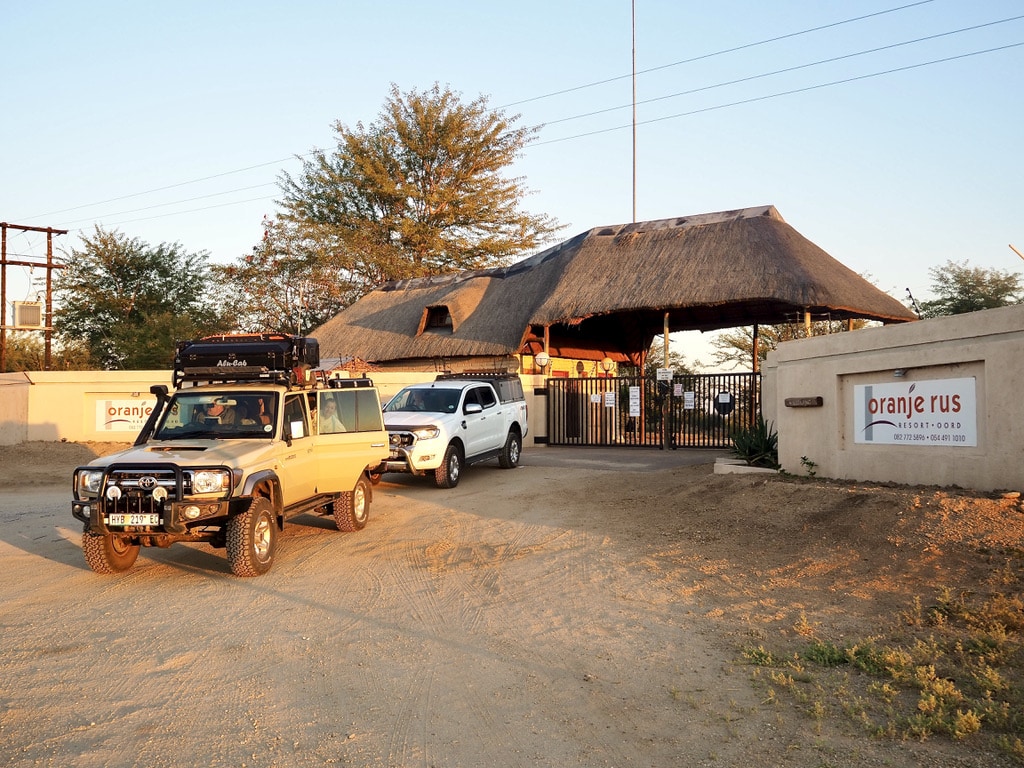
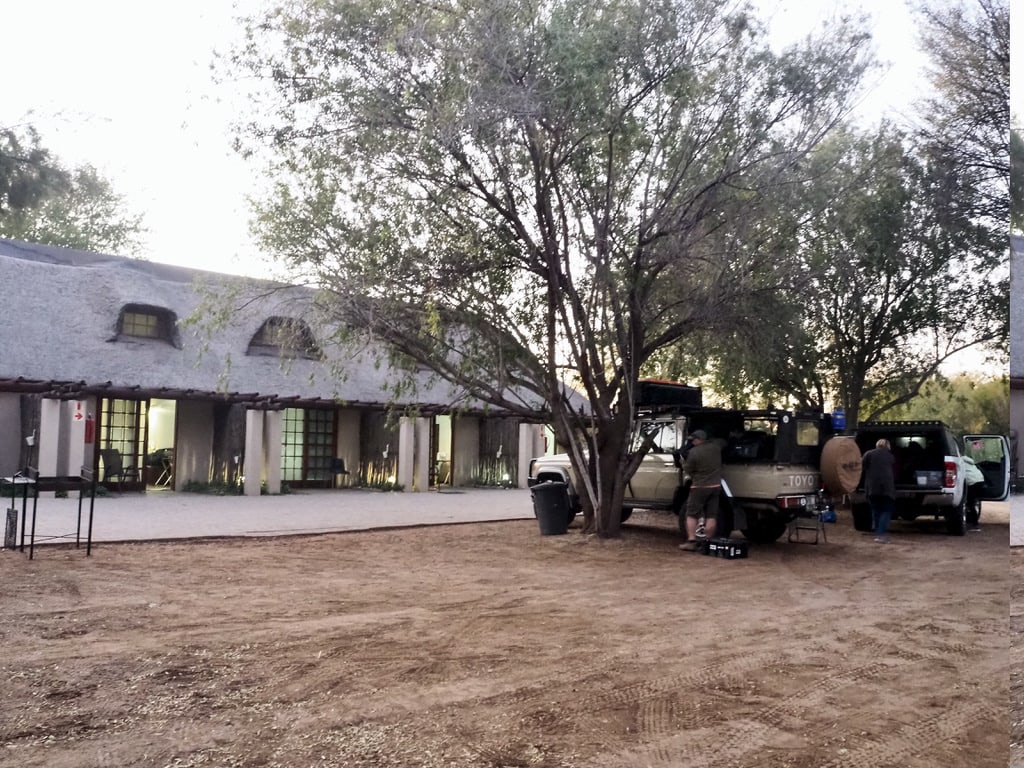
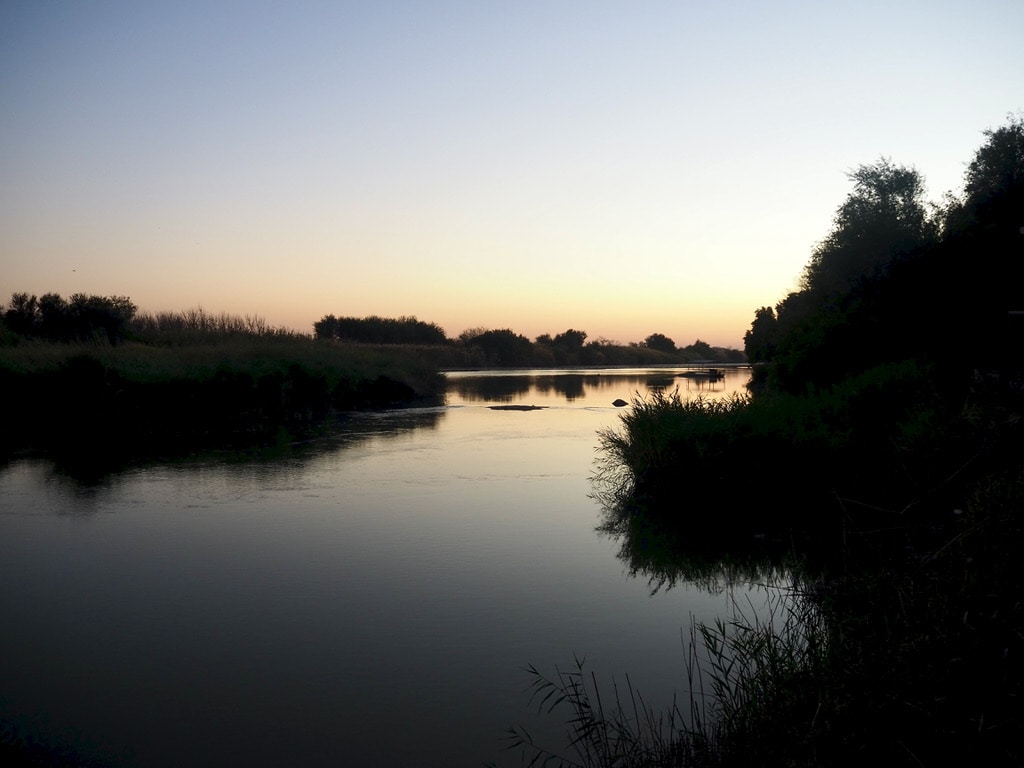
Upington – Twee Rivieren, Kgalagadi Transfrontier Park: 279km, 3hours
On the next day, we woke up early to reach our destination: the entrance to the Kgalagadi Transfrontier Park.


Kgalagadi Transfrontier Park, South Africa 🇿🇦

Stretching across the territories of both Botswana and South Africa, the park covers an extensive 37,000 square kilometers. In 1999, a treaty was signed between South Africa and Botswana to establish this conservation area. Officially opened in May 2002, the park is managed as one entity, although tourist facilities continue to operate independently.
The park is a malaria free area.
Travelers benefit from immigration and customs arrangements that allow them to enter the park in one country and depart from the other. The primary entry and departure point between the two nations is the Two Rivers/Twee Rivieren Gate, equipped with camping facilities, chalets, shops, and a restaurant.



The accommodation within the park is managed by SANParks. Various camps are available for exploration, and details can be found on the SANParks website. We stayed in two camps: Twee Rivieren and Mata Mata.
Twee Rivieren
Twee Rivieren Camp is the largest rest camp in the Kgalagadi Transfrontier Park. It provides many facilities, including camping grounds, chalets, a swimming pool, shops, a petrol station, and a restaurant. The camp is on the border post between South Africa and Botswana.


Mata Mata
Mata Mata is located along the Auob River and near the border between Namibia and South Africa. The camp provides a range of facilities, including camping sites, self-catering chalets, a swimming pool, shop or fuel station.
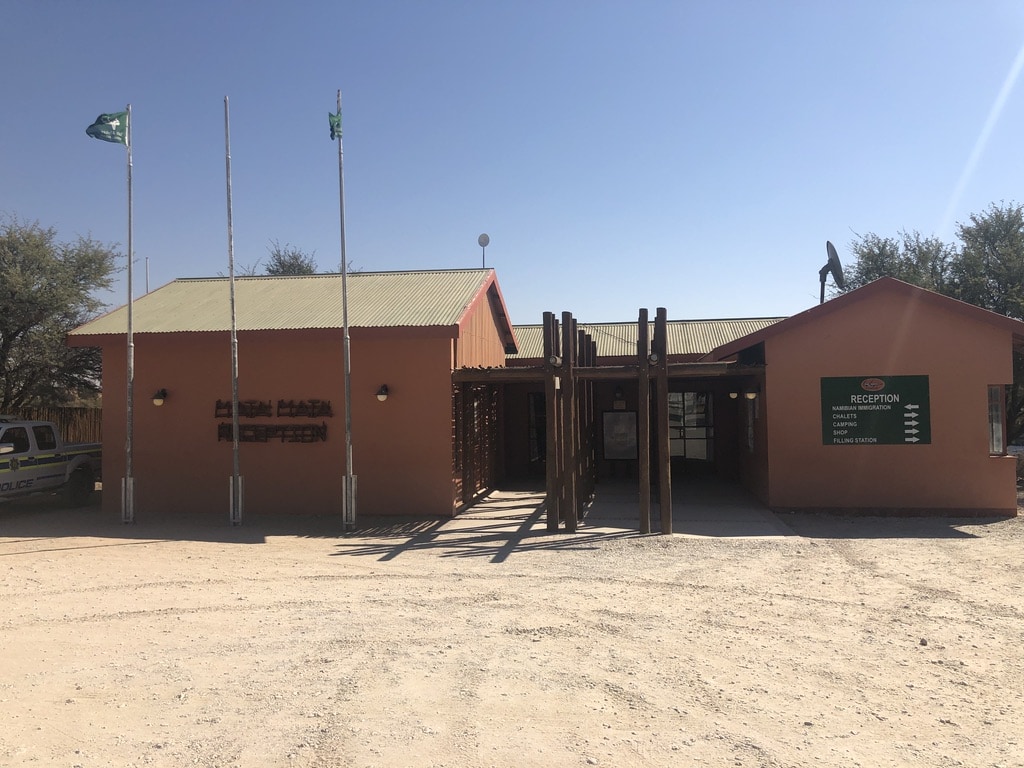


Game drives
Most of the park has gravel roads, so it’s better to drive a 4×4. To see more animals, it’s best to go on drives early in the morning and late in the afternoon when the animals are most active. Every drive is different, and you never know what you might come across.
Here are some cool animals we saw:
Honeybadger
They are known for their fearless and aggressive behavior, earning them a reputation as one of the most fearless animals in the animal kingdom. They are skilled hunters and scavengers, preying on a variety of small mammals, reptiles, birds, insects, fruits, and honey.
African Wild Cat
It is in appearance similar to domestic catsThey are skilled hunters, preying on small mammals, birds, and insects. They are solitary and mostly nocturnal, avoiding larger predators.
Lion
The park is known for its black-maned Kalahari lions, which are well adapted to the arid conditions of the desert. These majestic predators roam the park and are often seen resting under acacia trees or hunting for prey.
Jackal
Jackals are opportunistic omnivores, feeding on small mammals, birds, insects, fruits, and carrion. They are known for their distinctive vocalizations, including howls and yips.



Border Crossing: from South Africa to Namibia
After few days spent in KTP in South Africa we continued our safari trip to Namibia.
Crossing the border between South Africa and Namibia served as a reminder of the convenience of our EU Schengen Zone. Initially, on the South African side, we parked the car and underwent various procedures. The individual “stations,” marked with numbers, required us to go through each one: a check of car documents, passport inspection, and customs verification. Once completed, we drove a few meters to the Namibian side and repeated the process. The entire procedure took a good hour, even during the low-travel period of Covid, when there were minimal people at the border.
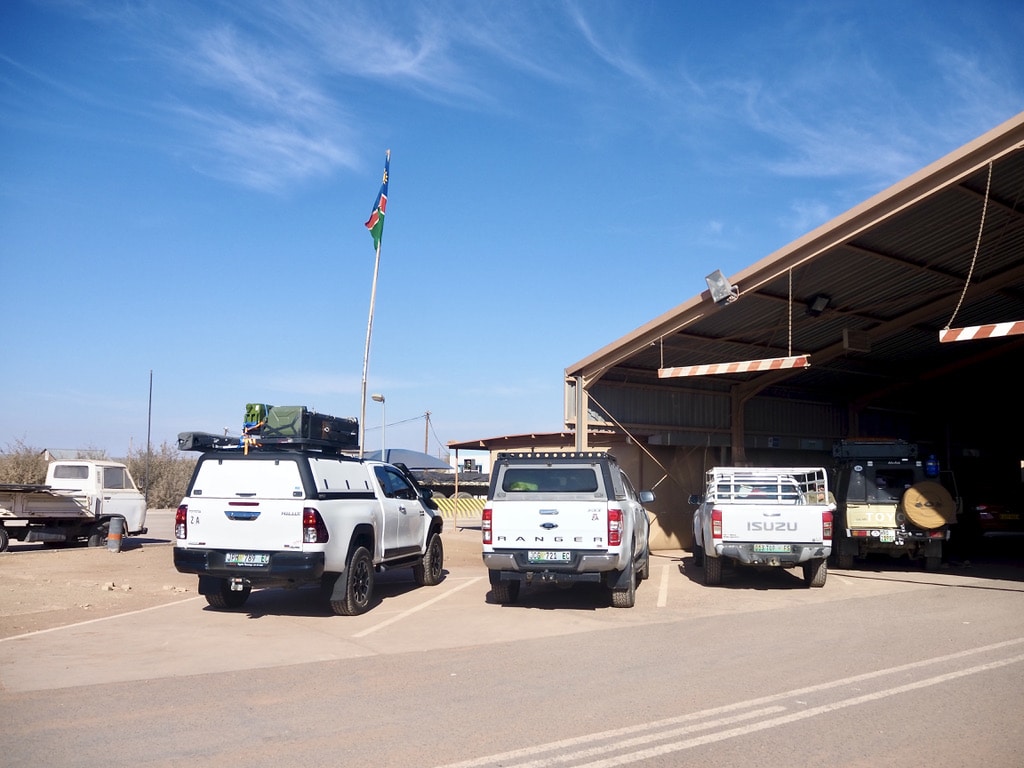

Lake Oanob Resort – Namibia 🇳🇦
Mata Mata – Lake Oanob Namibia: 482km, 5,5hours
Our next stop during our safari road trip was Lake Oanob Resort, surrounded by mountains and hills. The resort offers spacious chalets overlooking the dam, along with activities such as hiking, boat rides, canoeing, or aqua-cycling. Taking a break from the drive, we explored the area around the lake and enjoyed some water activities.




Etosha National park, Namibia 🇳🇦
Lake Oanob Resort – Etosha: 515km, 5,5hours
Etosha National Park is known for its expansive salt pan visible even from space. Despite this wildlife gathers around the waterholes, ensuring almost certain game sightings.
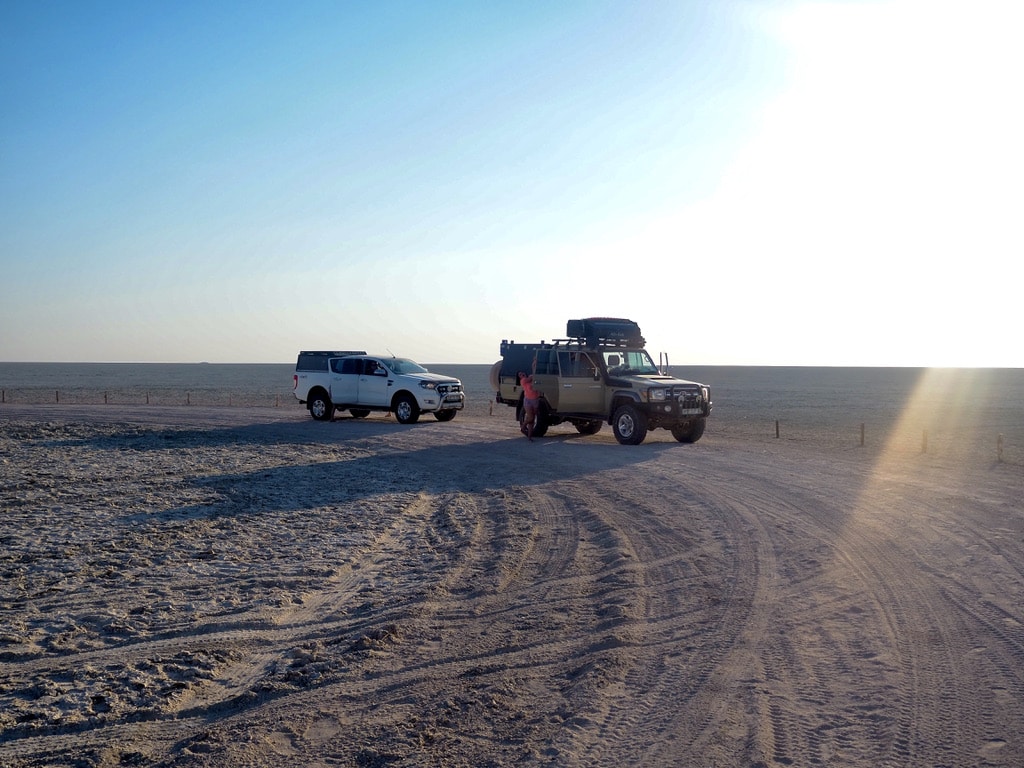

The optimal way to experience the park is by staying in the on-site accommodations. These camps, managed by Namibia Wildlife Resorts, demand careful planning and booking well in advance, often a year or more. During the quieter period of the Covid times, we were fortunate to be among the few guests, providing a high level of flexibility.


Okaukuejo rest camp
Upon arriving at the entry gate to Etosha Park, our vehicle and accommodation booking were checked. Once inside, we proceeded to our initial camp, Okaukuejo. This camp is the largest and is well-known for its amazing waterhole where animals gather during both day and night.



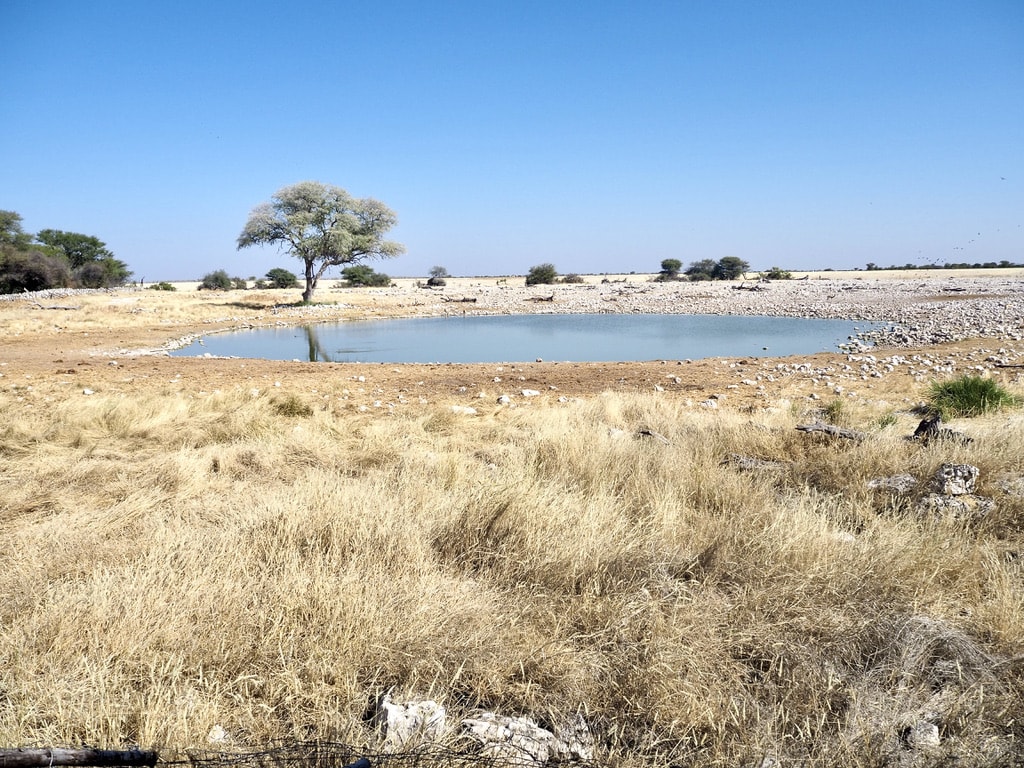


The self-driving experience in a nearly empty park was an adventure in itself. The wildlife in Etosha is truly amazing. Here are some highlights of the animals we saw around Okaukuejo.
Black Rhino
Namibia currently hosts the world’s largest population of black rhinos, predominantly present in Etosha National Park. Sightings around the park and waterholes are frequent during the dry season, typically from May to October. Despite the great conservation job done in Namibia, many conservationists worry that the rhino poaching common in South Africa may eventually extend across the border. I really hope that this proves to be wrong and that we will be able to continue admiring those beautiful animals.

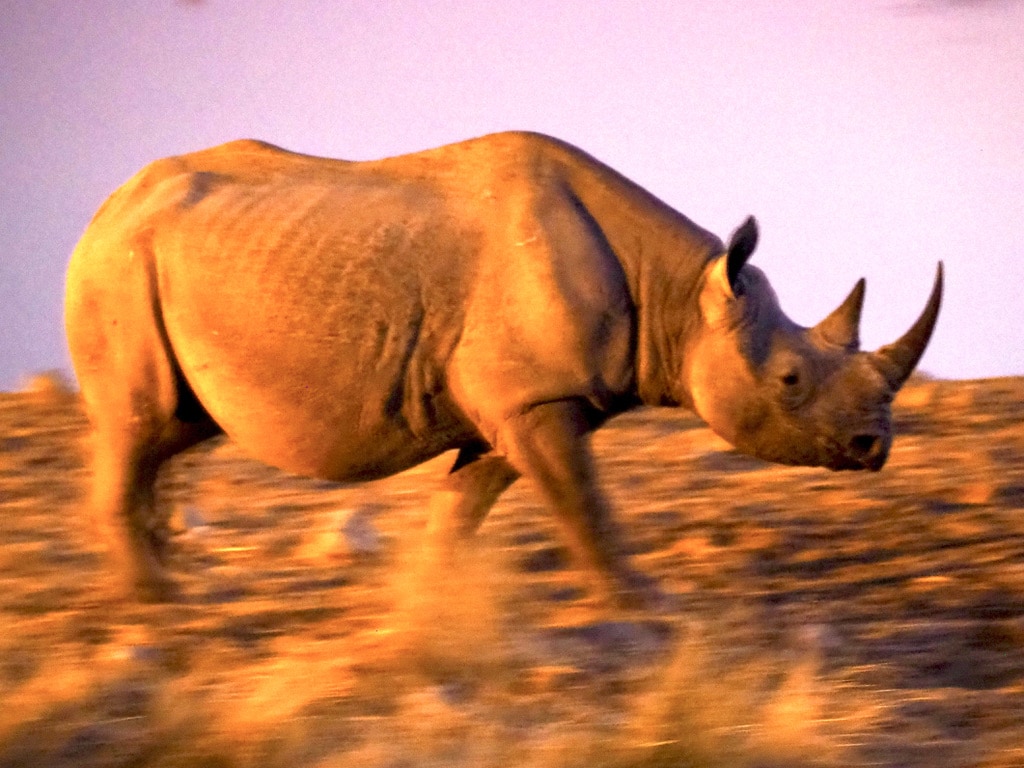

Lion
Lions are common in the park and we spotted them on several occasions.



Jackel
Jackals are slender and swift creatures that typically live in pairs. These pairs engage in various activities together, such as eating and sleeping. They exhibit strong territorial instincts and collaborate to defend their territory. Additionally, jackals hunt together as a coordinated team.

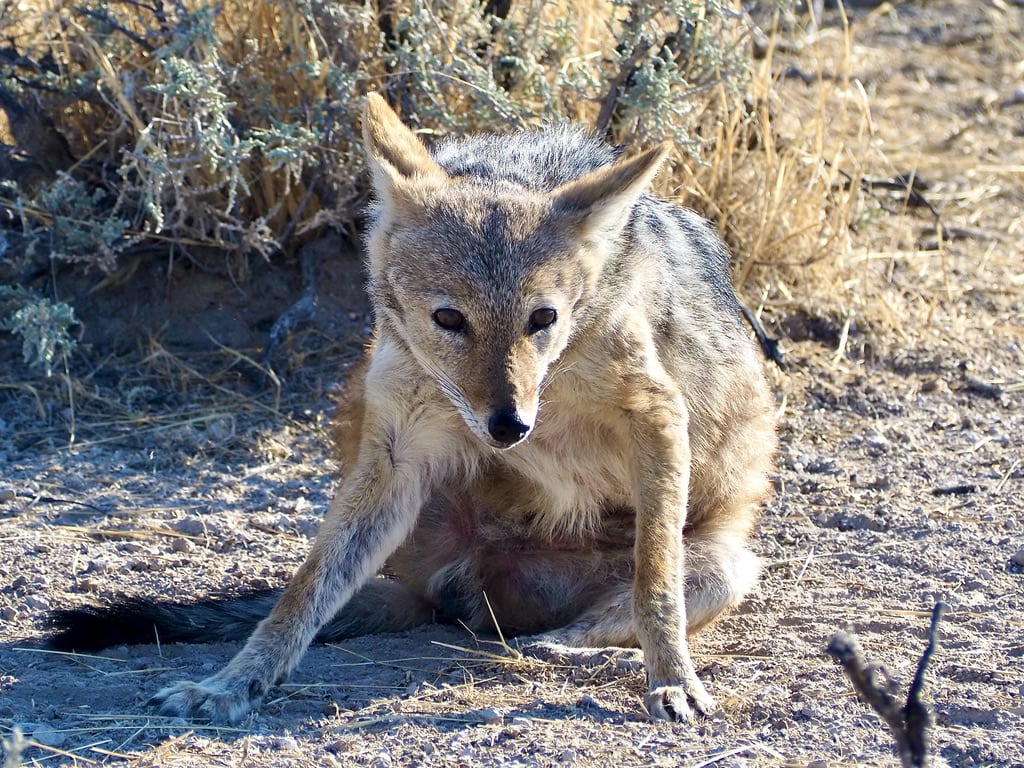
Hyena
Etosha has got the largest population of Hyena in Namibia. Hyenas are carnivorous mammals known for their powerful build, scavenging habits, and distinctive laughs.

Day trip to Olifantsrus Camp
While exploring the park, we made a day trip to Olifantsrus Camp. As Etosha’s newest camp, Olifantsrus is the first accommodation option in the park exclusively designed for camping, providing an opportunity to feel a little closer to the incredible African bush.

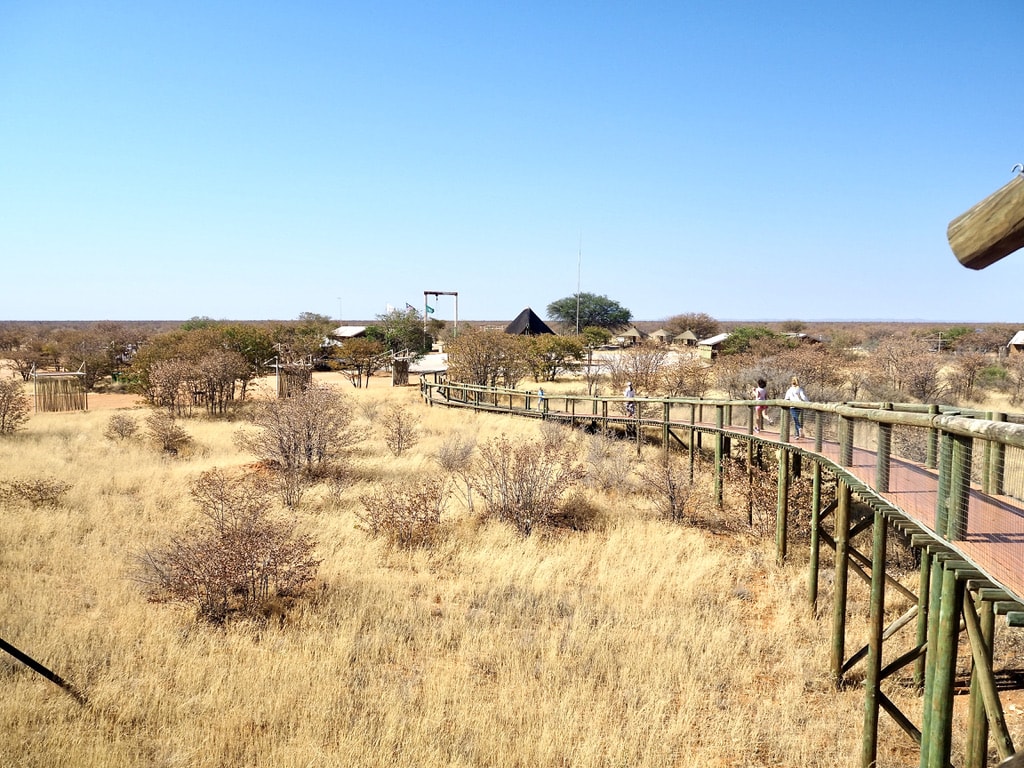



Halali Rest Camp
The next camp we stayed in was Halali, located approximately between Okaukuejo and Namutoni, our final destination. Halali provides self-catering cottages and a campsite. Although the camp has a swimming pool, it was unfortunately not operational during our stay. A short walk from the campsite leads to the floodlit waterhole, offering game viewing opportunities during both the day and night.




We continued exploring the wildlife.
Giraffe
Giraffes are beautiful animals. They spend most of the day munching on Acacia trees. When drinking from the waterholes, they are always super cautious as the drinking position makes them very vulnerable.
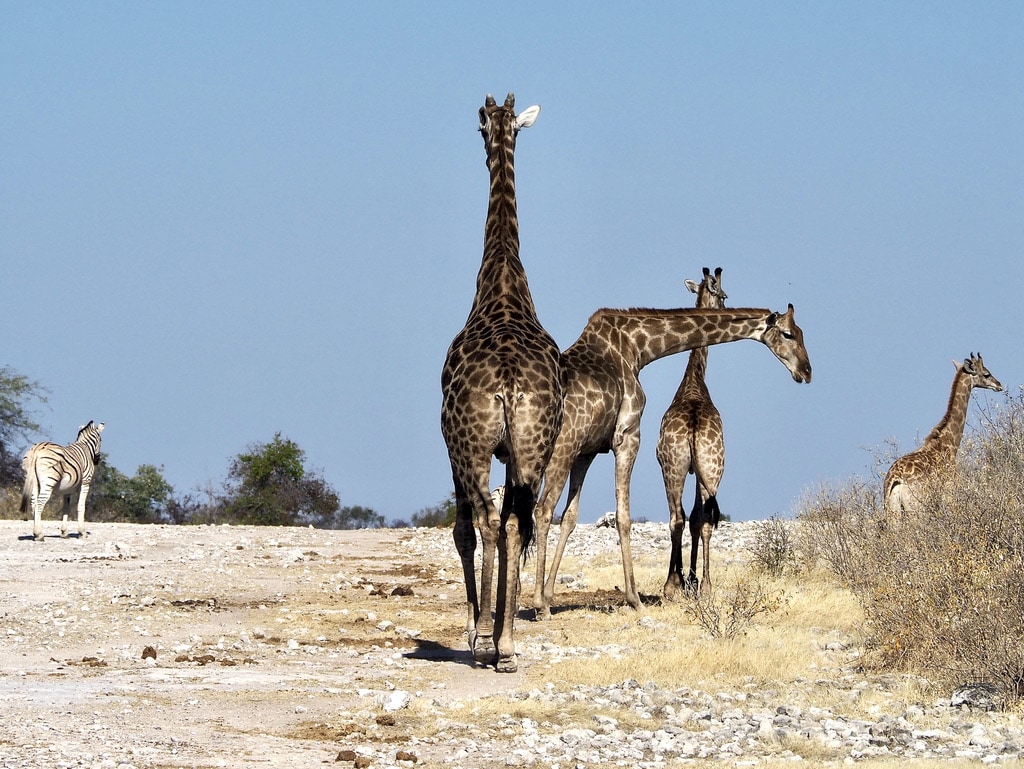



Elephants
Elephants are iconic. The largest land animals on Earth, are known for their intelligence, social behavior, and distinctive features, including their long trunks and tusks. They spend the day walking around and eating.




Namutoni Rest Camp
The last camp we stayed in was Namutoni. A premium setup with comfortable rooms, a restaurant, and a swimming pool. Originally established as a control post during the mad cow disease epidemic of 1897 in Namibia, Fort Namutoni was built by the Germans. It functioned as a police post and later as a South African army base. and later as a South African army base, the fort was declared a national monument in 1950 and opened to tourism in 1957.



Like all other locations in Etosha, Namutoni’s surroundings offer fantastic game viewing. The highlight of our stay was spotting a leopard near the camp. Leopards are notoriously difficult to spot, and we were hoping to see one throughout our entire stay in Etosha.



During one of our day trips, we ventured to Onkoshi Camp. Along the way, spotting animals, we reached this exclusive camp perched on wooden structures, away from the public self-drive routes. Onkoshi Camp is situated right on the border of the park’s characteristic salt pan, offering a premium experience away from the public self-drive routes. Operating mainly on solar power, Onkoshi is a low-impact camp.
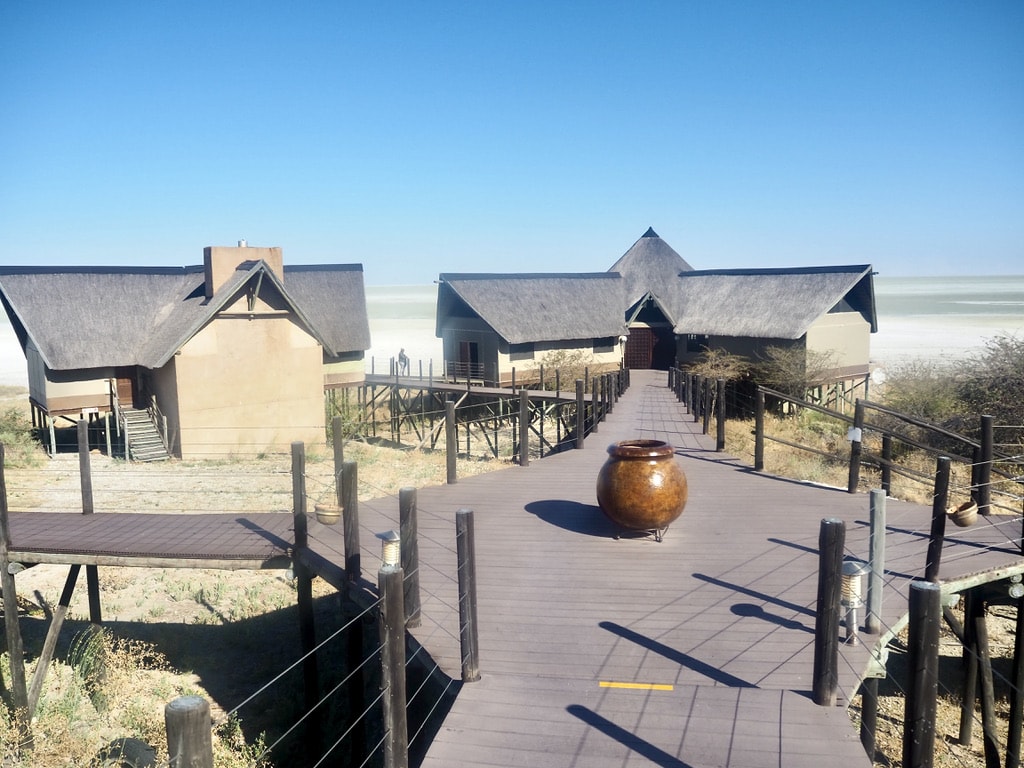


Driving back from our safari road trip in Africa
The drive back was lengthy and unexpectedly led to a stop in a place I had never imagined staying. On the first day, we drove from Namutoni to Windhoek, covering 540km with an estimated travel time of 5.5 hours. However, the journey took much longer as we needed to get our COVID tests done on the way, hoping for negative results on time to cross the border back into South Africa.
The original plan for the second day was to drive from Windhoek to Upington in South Africa, covering about 1000km. As we approached the border, we still hadn’t received the Covid test results, so we had to make a plan and find a place to stay.
We stopped at a sign for Grunau Country Hotel, which seemed to be in the middle of nowhere, and I had some doubts. To our surprise, it turned out to be a wonderful spot! We enjoyed a lovely dinner and awesome wine—just perfect.

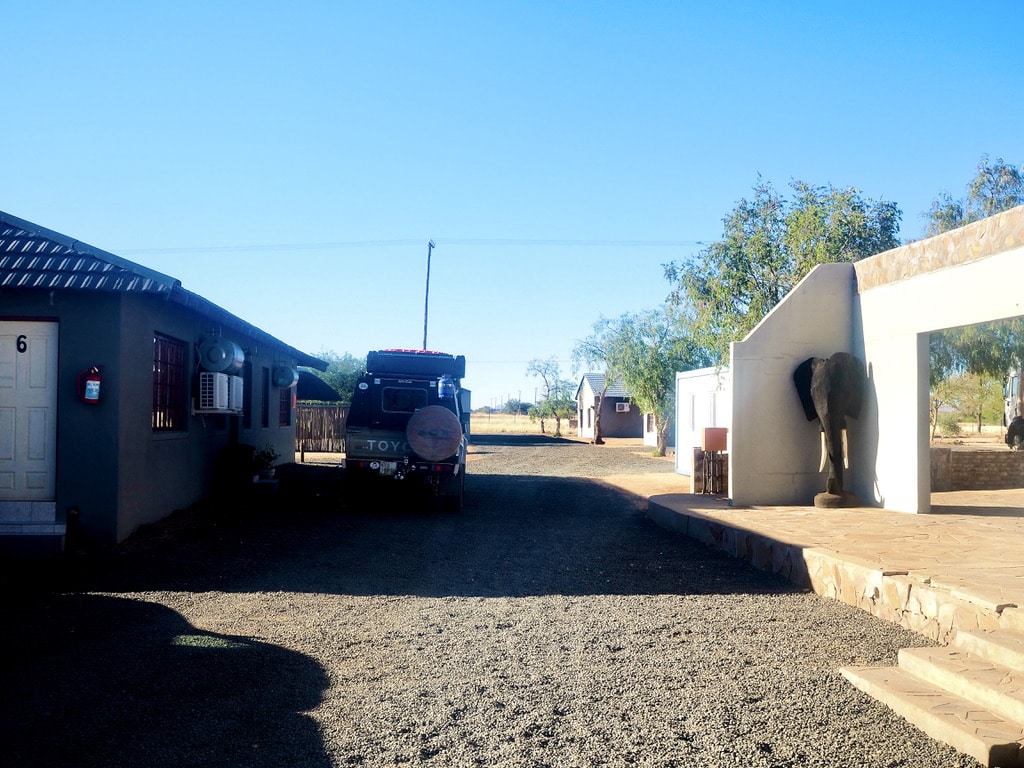

Eventually, we received our Covid test results in the evening and set off for our 1250km drive back home to our house in the Royal Alfred Marina.
